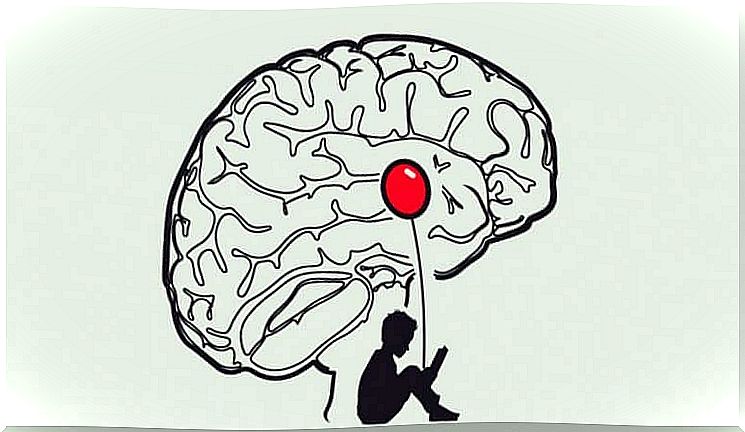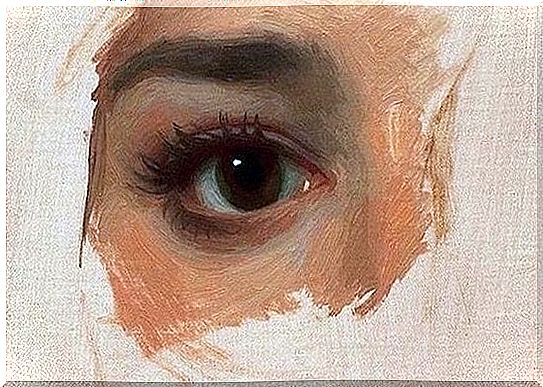Floating Anxiety: The Void Where My Fears And Uncertainties Live

I’m not afraid of anything in particular, but in reality… everything scares me. Because fluctuating anxiety is like that, it’s the uncertainty that chases me and catches me, that makes me lose my breath and the desire to leave the house. It’s like living in a room without windows and in solitude, it’s living indefinitely in the shell of my worries, in the suffocating tangle of my hopeless despairs…
Virginia Woolf said in her diaries that life is a dream, but it is the awakening itself that kills us. It’s as if somehow there arrived a point in our existence when it is necessary to “wake up”, open our eyes to the responsibilities, to the burdens, to the unstoppable movement of our cities, to that sometimes out of tune sound of human relations… So, almost without realizing it, we realize that this whole movement not only beats us, but also diminishes us.
Waking up to life and discovering that it sometimes hurts and that it can be difficult at times is something that thousands and thousands of people feel without a doubt. However, there is something much more complex that day after day countless men and women live. It is a diffuse and formless fear, fear of being trapped in a behavioral pattern of excessive and recurrent worry about almost anything, any event.
Likewise, this emotional scenario, in which chronic uncertainty and constant stress only increase, gives rise to a clinical manifestation known as “free floating anxiety” and which, in turn, is part of Generalized Anxiety Disorder (GAD) . It is worth saying more, we are facing a reality as exhausting as it is complex, since, unlike other disorders, concern and relationships do not focus on a series of specific aspects, but cover everything.
Generalized Anxiety Disorder could be summarized in a sentence as simple as blunt: “I’m always thinking that something bad is going to happen”

Floating anxiety: irrational fear, non-adaptive fear
Carlos is 35 years old and, after 10 years of relationship with a woman, he has just been left. She has fallen in love with someone else and even though our protagonist is apparently okay, those closest to him are noticing certain flashy aspects. Although Carlos has always been a little anxious, after the breakup of the relationship he became obsessed with several things, one of which is his parents’ health: he is afraid that they will get sick and die.
Furthermore, at work people are also noticing some details. Carlos is an architect and, some time ago, he started to get obsessed with the idea of making a mistake. He worries too much about doing his job perfectly well and fears that something bad will happen under his responsibility. Carlos is also afraid of not being able to pay the mortgage. Because of that, he’s already thinking about what exits he could find if that happened. However, none of that has happened yet.
If we take the example of this imaginary man, it is for a very concrete reason. Generalized Anxiety Disorder, and in essence this fluctuating fear that pervades almost every aspect of these patients’ lives, is estimated to affect women to a greater degree. However, the data also show something very relevant: almost 60% of people affected by the disease do not receive treatment or do not dare to take the first step in search of help, and a good part of these people are men.

Why does everything worry me? Why do I live in this abyss of uncertainty and anguish?
To better understand this disorder and, in essence, this clinical manifestation that is fluctuating anxiety, we must first understand what role fear plays in our lives: it prepares us to react to a “real” threat, it is a refined adaptive mechanism and exceptional that allows us to survive. However, what happens when we feel fear and there is no real threat?
And even more… what happens when there comes a time when this fear and this anguish permeate every aspect of our lives? What simply happens is that we’re stuck in a parallel dimension worthy of the worst nightmare. Because there’s nothing worse than living in fear.
Possible causes
Many scientists and neuropsychiatrists make it clear: GAD is a syndrome unlike any other. Thus, from the Stanford University School of Medicine, they explain to us that this fluctuating anxiety is due to a malfunction in different parts of the brain, one of them being the amygdala.
We remember that the amygdala, that little structure the size of an almond, deals with our emotions, our memory and our perception of fear. At some point, and for unknown reasons, the circuits that make up this delicate brain region are altered and, with that, the very order and balance of our lives are also altered.

How to Treat Generalized Anxiety Disorder?
As always with the treatment of anxiety, two approaches are needed to deal with this clinical condition. Medication, for its part, reduces symptoms and, in turn, allows for the conditions necessary for psychotherapy to be much more effective.
Drugs based on selective inhibition of serotonin uptake are generally used. However, and in many cases, it is also necessary to administer some antidepressants – although we must always remember that each patient is unique and their personal reality will require an exclusive treatment.

On the other hand, cognitive-behavioral therapy and all those therapies focused on combating stress are very effective in reducing these excessive worries caused by fluctuating anxiety. With them, we learn effective coping strategies and develop healthier and more integrated behaviors.
In conclusion, it is also worth noting that it costs nothing to take care of other aspects of our life: eating and practicing some sport or meditation technique are also complementary tools that can be used to overcome fear, better focus attention on what is important, essential, and thus learn to think correctly in order to live better.
Images courtesy of Agnes Cecile.









